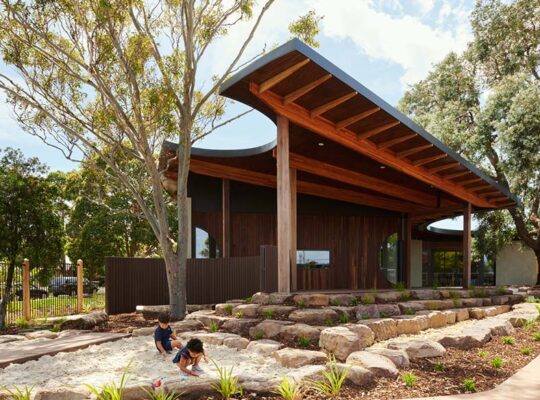Background and Location
Weflow Hostel, situated at the intersection of a block and the north side of the Inner-Ring Viaduct in Shanghai, has undergone a remarkable renovation under the guidance of JH-Atelier. Originally an old family hotel with cramped rooms and limited natural light, the building faced the challenge of being transformed into a vibrant and functional hostel.

Functional Design
The hostel spans two floors, with the first floor serving as a 24-hour public “living-room” open not just to guests but also to the urban landscape. The second floor, redesigned completely, now houses the sleeping quarters for hostel guests. The innovative layout features glass brick partitions to ensure ample daylight permeates every corner while maintaining a central functional area.
Construction and Customization

A standout feature of Weflow Hostel’s design is the extensive use of glass bricks. These were meticulously customized and handcrafted to create a seamless glass brick wall effect. Additionally, the hostel boasts bunk beds designed and tailored for each room, offering varying heights and slide windows for individual comfort and convenience.
Exterior Aesthetics
The exterior facade underwent simplification, retaining only window openings and opting for a glass brick wall at the building’s corner. This architectural choice not only maximizes interaction between the “living-room” and the cityscape but also transforms the hostel into a luminous beacon within the neighborhood, particularly after nightfall.
Urban Impact and Transformation

Weflow Hostel’s revitalization has had a profound impact on its urban surroundings. Located in an area lacking commercial appeal, the hostel’s modern design and online presence through OTA platforms have attracted a significant influx of visitors, primarily young adults and international travelers. This influx has injected newfound energy and curiosity into the once-stagnant neighborhood, turning Weflow Hostel into a vibrant hub and symbol of urban renewal.
Conclusion
Weflow Hostel stands as a testament to the power of innovative design and strategic positioning in rejuvenating urban spaces. Its transformation from a neglected building to a bustling hostel underscores the potential for architectural interventions to catalyze positive urban change and community engagement.
























